
The 10 best PC-Engine games
10: Cross Wiber - Cyber Combat Police
Cross What? This game isn’t on any top PC-Engine list anywhere. Why include it here? Because it looks fantastic, and it has a soundtrack to buy a real PC Engine for, mod it for stereo output and enjoy it at its best. The game is hard, it has unbearable bad mechanics, yet you will get further and further, maybe even finish it some day. Oh wait, the Everdrive version has a hacked version for invincibility! While doing so, you are enjoying awesome artwork and the uber-league of chiptune music. That’s why Cross Wiber is here.

9: Dragon Spirit
A classic shmup from the arcades was ported to the PC Engine. This is far from an exclusive, it was brought to almost every system you can think of, ZX Spectrum, Amstrad, PC, NES, MSX even recently on a PS3 and XBOX 360. Yet somehow Hudson managed to make the best of the bunch. Many potent game systems like X68000 set the goal at perfect arcade emulation. But the arcade game is too hard, and the FM sound of it too bright and metallic. So the PC Engine conversion is Dragon Spirit at its best! The sound track is amazing in wavetable chiptune, the level detail is just a tiny bit behind the arcade, but all the action is there and it is more foregiving. Overall the best way to enjoy this game.
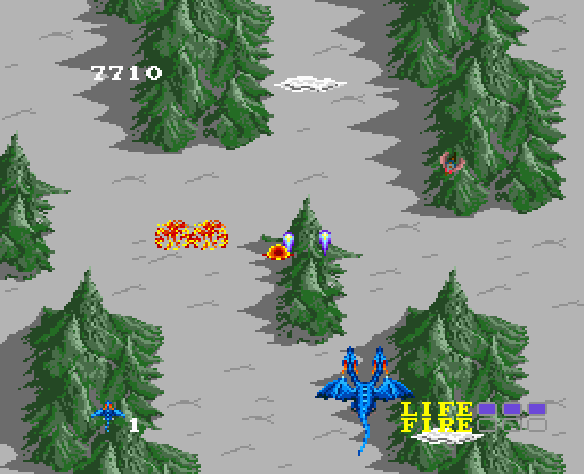
8: After Burner
This entry is from the golden trio of late eighties Sega arcade games, together with Outrun and Space Harrier. Space Harrier was here first, it is a great port, but it lacks the continue option of the arcade, so it will frustrate you a lot.After Burner II is more an adrenaline ride from a theme park than computer game, but heck, it is an awesome ride. Even kids that grew up with Minecraft in full 3D feel this was a game changer back in the day. And the best thing is that among various ports, Hudson insisted on keeping the lead guitar in the sound tracks. So bar none, this is the only After Burner game that sounds the way it is supposed to sound. And always nice to wipe the floor with the Mega Drive, Sega’s own console. After Burner II is a marvel of 8-bit game engineering!
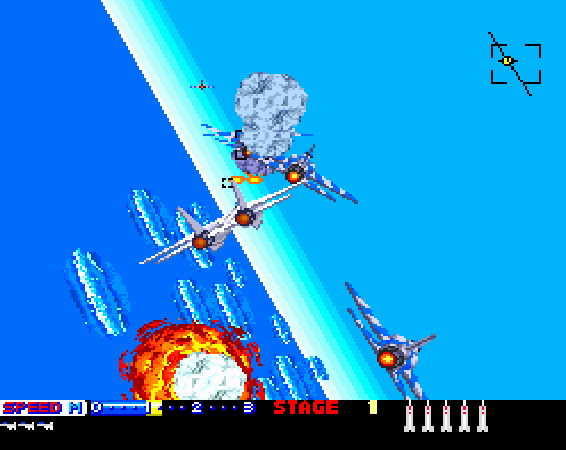
7: Doreamon - Nobita’s Dorabian Night
A system exclusive, platformer and Doraemon. A must have combination in a top-10 list! Our beloved robot cat goes after his friends that disappeared in a childrens book of 1001 Nights. He travels to 8th century Bagdad to rescue them. The platform game is not too hard, but it looks stunning, bright colours, nice level variation and easy but detailed end bosses. And it has a blue robot-cat. Meow!
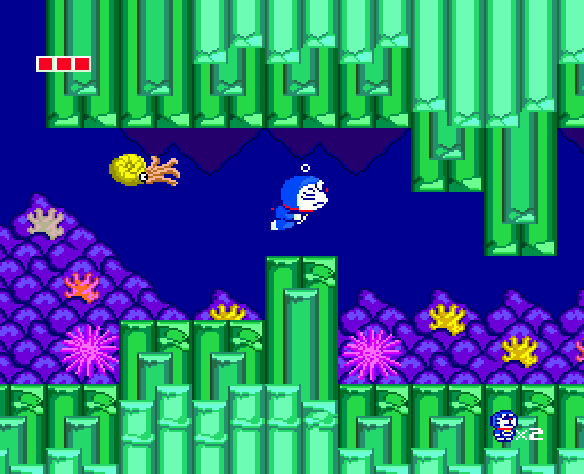
6: Jackie Chan - Action Kung Fu
Is it possible to make a game for an actor? You probably won't believe it, but the designers of the Jackie Chan game not only did that, the result is great! The PC Engine version improves on the already great NES game. Character and level design is brighter, bolder and the colours pop off your screen. Funny mini-games are added and the already amazing NES soundtrack is taken a step further with stereo, wavetable samples and more channels. A magnificent chiptune classic. The end is a bit weird, you rescue a girl, but after freeing her you battle a spider and wait for another year to close her in your arms... The staff roll is amazing. The team behind the game put their anime heads on the level bosses. Did you ever see the producer of a game doing a muscle show pose with HuCard earrings?
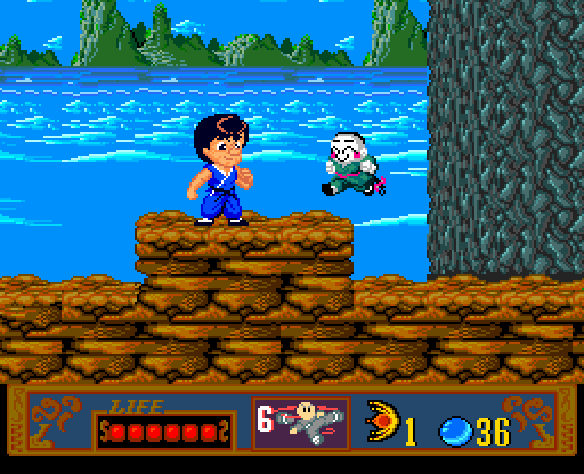
5: Final Soldier
This second installment of the Soldier series feels like an indie title compared to Soldier Blade and Super Star Soldier. Somehow the smaller team outperformed the productions of their bigger brothers. If you play the first level of Soldier Blade, you might think it is the finest of the series, but level 2 looks like a style-clash, and the music goes down from level 3. Not to forget the price. For a single copy of Soldier Blade, one can buy 3 Final Soldier HuCards.

Final Soldier on the other hand is excellent from start to finish. Especially the music score by Masakatsu Maekawa is asthonishing. The drum patterns are as if a real drummer controls the audio chip, the melodies are classic earworms and the. It has a great setup to control the behaviour of 4 different power ups, and the powerup system is fair without the risk of picking up unwanted pods. Final Soldier is hard, but not too hard. You don’t respawn at the begin of a wave after you die, so no frustration here.
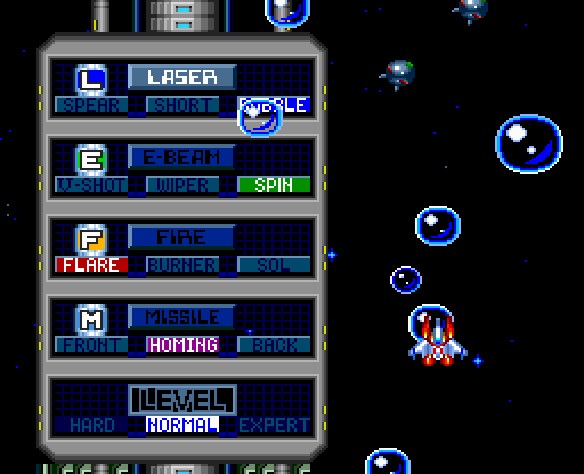
4: Neutopia II
Neutopia was a blatant Zelda clone. Thanks to the power of the PC-Engine it had much improved graphics and sound compared to the original NES game.
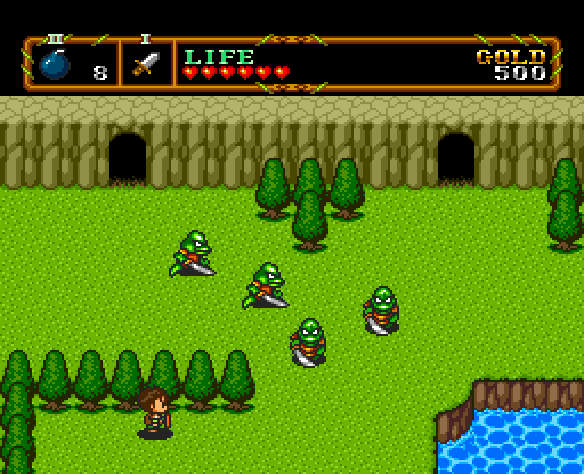
Neutopia II goes beyond Neutopia. It’s world is way bigger, the HuCard is twice as large. Most glitches were ironed out: you can move in 8 directions now, the hitboxes are better, and you can stand behind a tree now. The boss battles are excellent. Most impressive though is the world design and the music score. Where Link to the Past on a SNES has a muddy orchestral music score, Neutopia II is way more atmospheric. Chiptune meats synthwave. The dungeons and the water world having out-of-this-world beautiful music.

3: Galaga ’88
This is the first game that is a reason to buy an actual PC-Engine console for. We all love Galaga. Galaga was perfected in Galaga ’88 in the arcade, though that game is pretty hard. The PC-Engine version is every bit as good, but a tad easier, so it is possible for you and me to finish it once in your lifetime. And when you do, you will hear the most astonishing boss defeat music ever composed. Solely on the PC-Engine, no other port has it.

2: Kyukyoku Tiger
Sequal to the arcade classic Tiger Heli by Taoplan/Taito. You fly an attack helicopter into a warzone and you have to shoot down endless waves of enemy tanks and helicopters. Sounds easy? Well it isn't. Not as unbelievably hard as in the arcade, but a good pain in the bottom. Decent rock music sets the pace through the levels, bosses are tough as heck. Either throw your frustration out on the gamepad, or take it easy with auto-fire assistance. Magnificent classic! Beautiful artwork, highly rewarding upgrade system, stunning enemy AI patterns, almost bullet-hell at times. I used to have this game at position 7, but I find myself putting this HuCard in the console all them time. Kyukyoku Tiger is one of the cheapest and most easy to find cards, yet when you insert it your TV transforms into a full blown arcade machine. The best way to do some relaxing after a long day of work.

1: Bomberman ’94
The second reason to buy a real PC-Engine (or PC-Engine Mini) is Bomberman ’94. This game is both the best Bomberman game ever, and it is a magnificent colaboration between Hudson Soft and the console itself. Hudson knows all the tricks and plays the PC Engine like a musician plays the Steinway. It outperforms Mega Bomberman for the Mega Drive (basically the same game with crippled sprites and music), Saturn Bomberman (witch a lousy battle mode, less catchy music and some slowdown, and Super Bomberman 1-5 (games that are a mockery for the SNES)
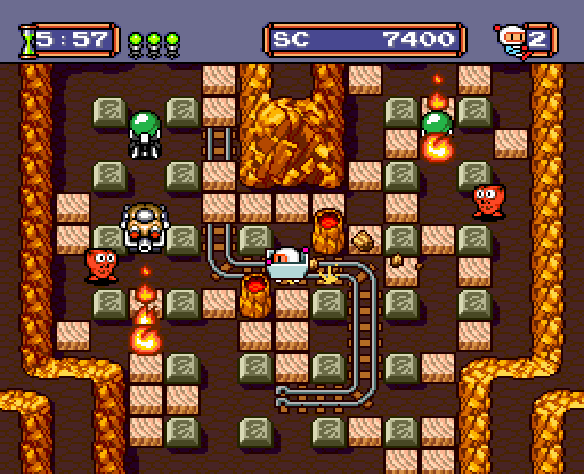
Bomberman ’94 improves on its predecessor Bomberman ’93. In story mode many stages go beyond 1 screen. The attention to detail is amazing. Dancing pinguins, water waves, fish swarms, vulcanic eruptions, mine cart action, character animations. All with the awesome music score. And it has a monkey remote controlling a robot banana as level boss! How awesome is that? Then there is the famous multi-player mode. Bomb up to 4 friends from the map, in 10 great battle worlds, riding kangaroos. This is 8-bit heaven! Bomberman ’94 is the best Bomberman on any system. So if you need a reason to buy a PC Engine, Bomberman ’94 is a great one.
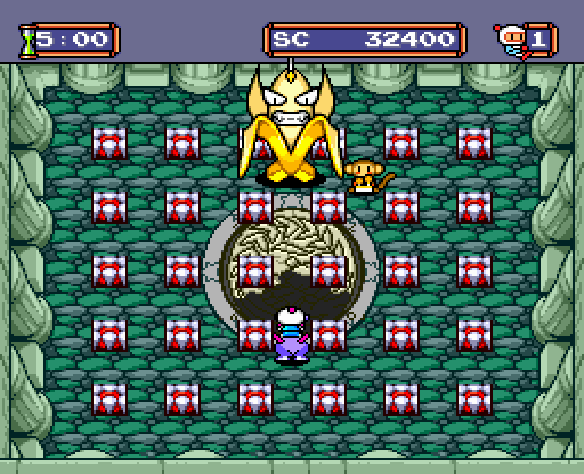
Return to 10 reasons why the PC Engine is the best classic gaming console
www.retrospace.nl© 2008-2025 Martijn Koch